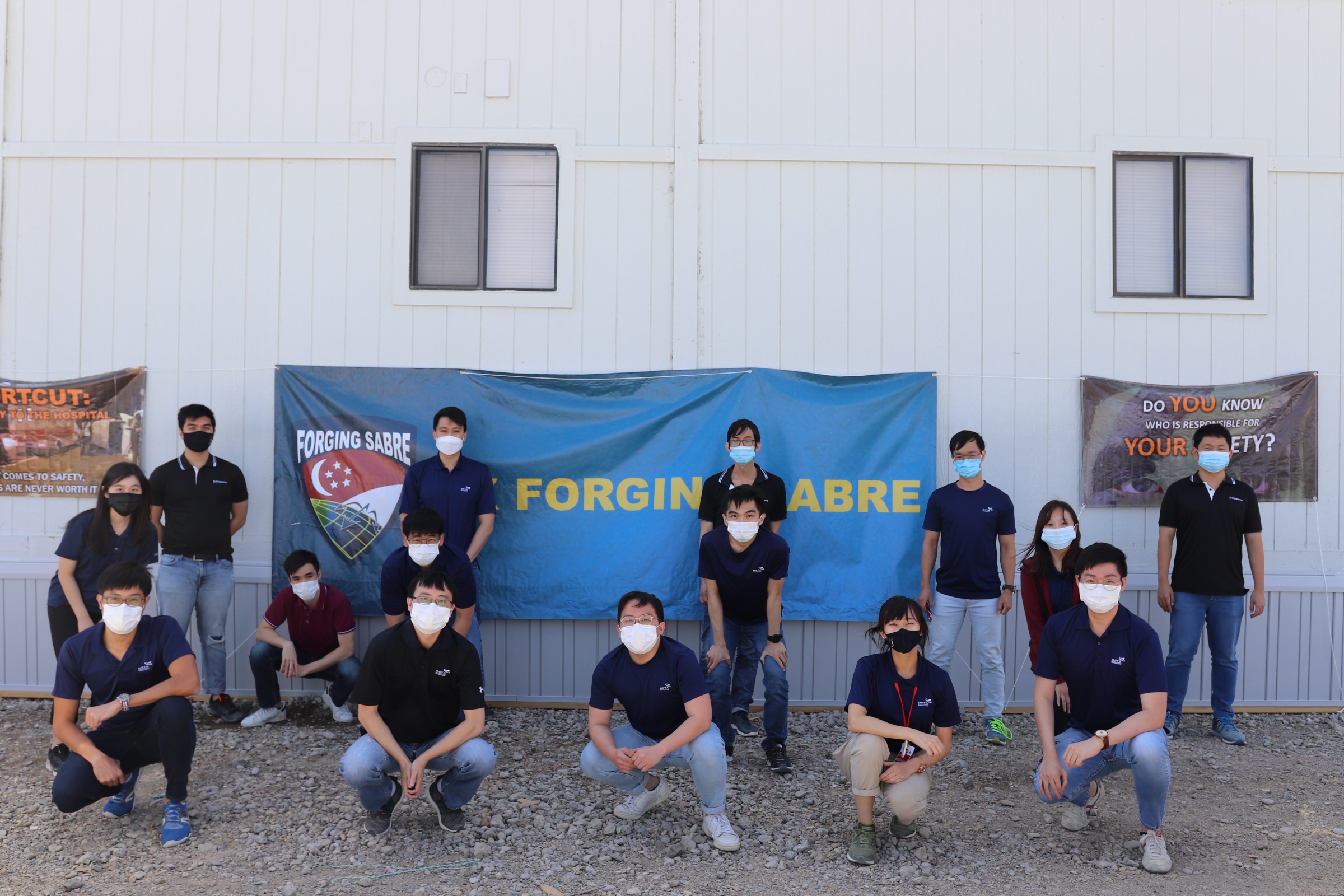27 Sep 2021
From the office to the frontlines, our engineers joined their SAF counterparts at the latest Exercise Forging Sabre (XFS) to validate the latest technologies developed to help the SAF sense more, fight smarter, and strike as one.
Held from 14 to 25 September 2021 at Mountain Home Air Force Base in Idaho, US, XFS21 is a biennial integrated sense and strike exercise which allowed for large-scale and realistic training for the SAF to maintain high levels of operational readiness.
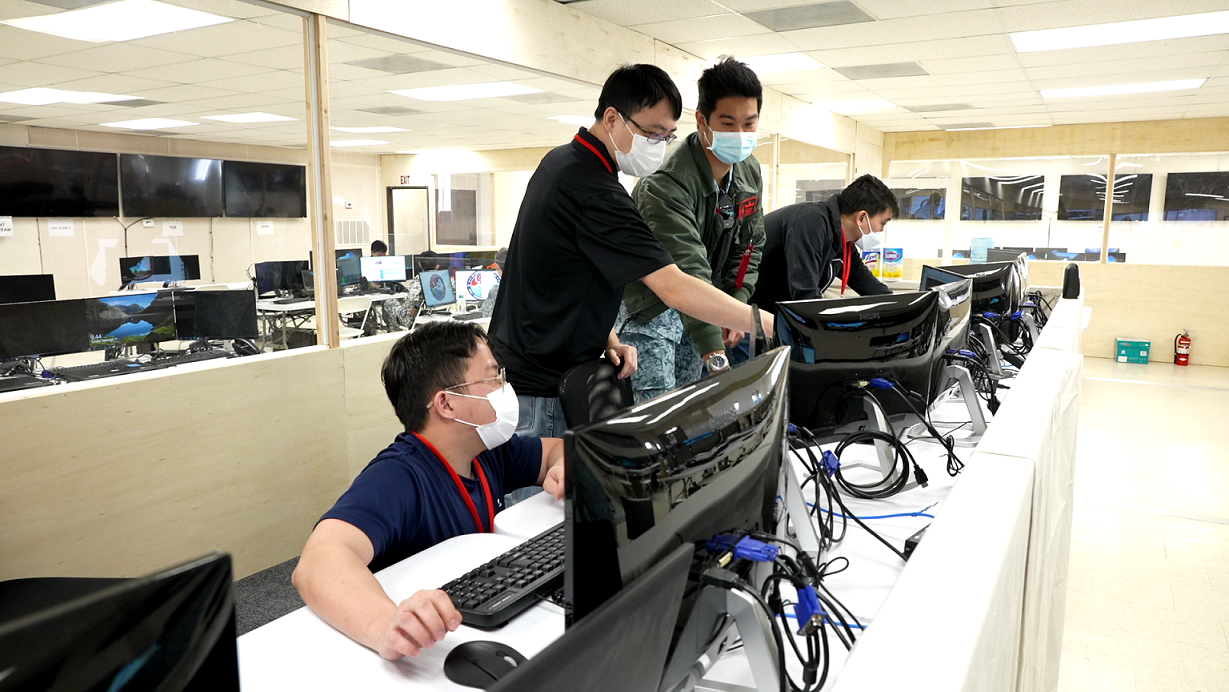
Defence engineers at the command post in XFS 2021.
Some of our engineers, including Head Capability Development (Military Info Domain) Sim Jian Ping and Senior Engineer (Information) Kevin Po, were involved in the development and deployment of the enhanced Command and Control Information System (CCIS). Enabled by a Decision Support System, the CCIS eases the cognitive load of commanders and enhances the decision-making process to help commanders make faster and more robust decisions for sense and strike operations.
Integrated into the command post – the nerve centre of the SAF’s operations – the CCIS provides commanders with a comprehensive situation picture of the assets available, and the battlefield in real time. Its Recommendation Engine also taps artificial intelligence (AI) and data analytics to recommend optimal warfighting solutions, such as pairing the most suitable air and land strike assets to eliminate specific targets.
The AI algorithms were developed by DSTA engineers by integrating data from three components: the capabilities of the different assets, environmental data such as the terrain, and data on the exercise’s scenarios.
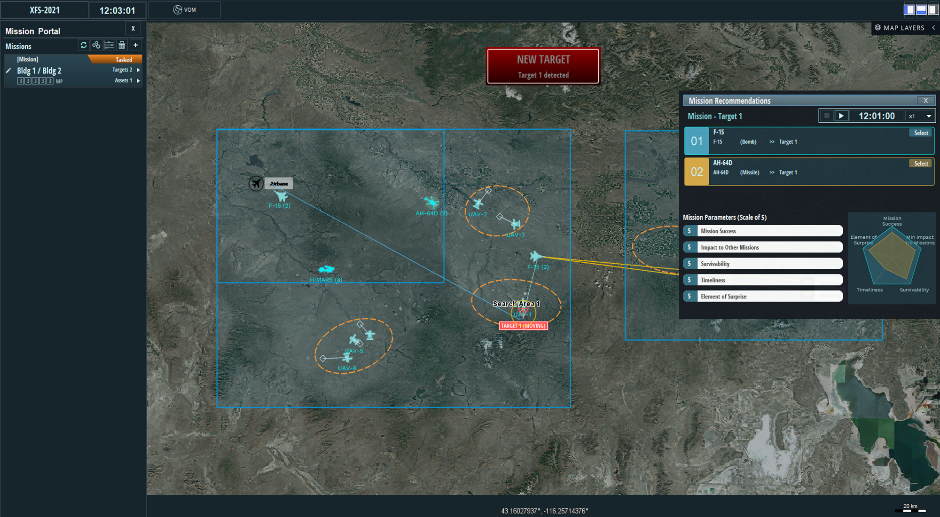
The CCIS’s user interface, including its Recommendation Engine.
Prior to the actual exercise, DSTA engineers tested and refined the CCIS in a simulated environment in DSTA’s Imagine Future Centre, a space dedicated to experimenting and prototyping new technologies. By harnessing modelling and simulation technologies, the team created a digital twin – a mirror of the actual assets – of the command post in a virtual 3D environment to test and validate the CCIS’s effectiveness. The digital twin also enabled the SAF and DSTA to prototype new features rapidly and allow for an agile development of the system, which has enhanced ops-tech collaboration.
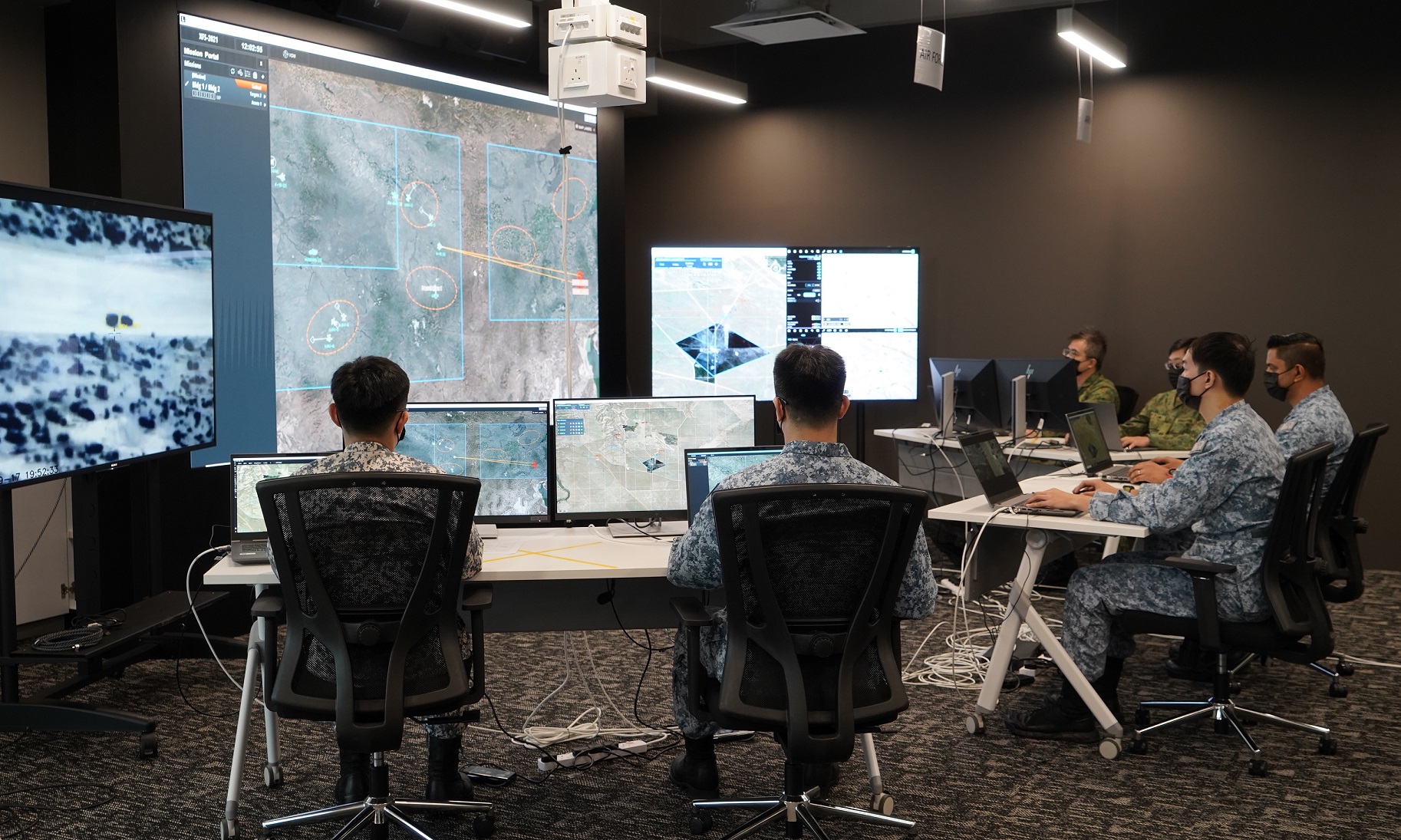
A prototype of the CCIS at DSTA’s Imagine Future Centre.
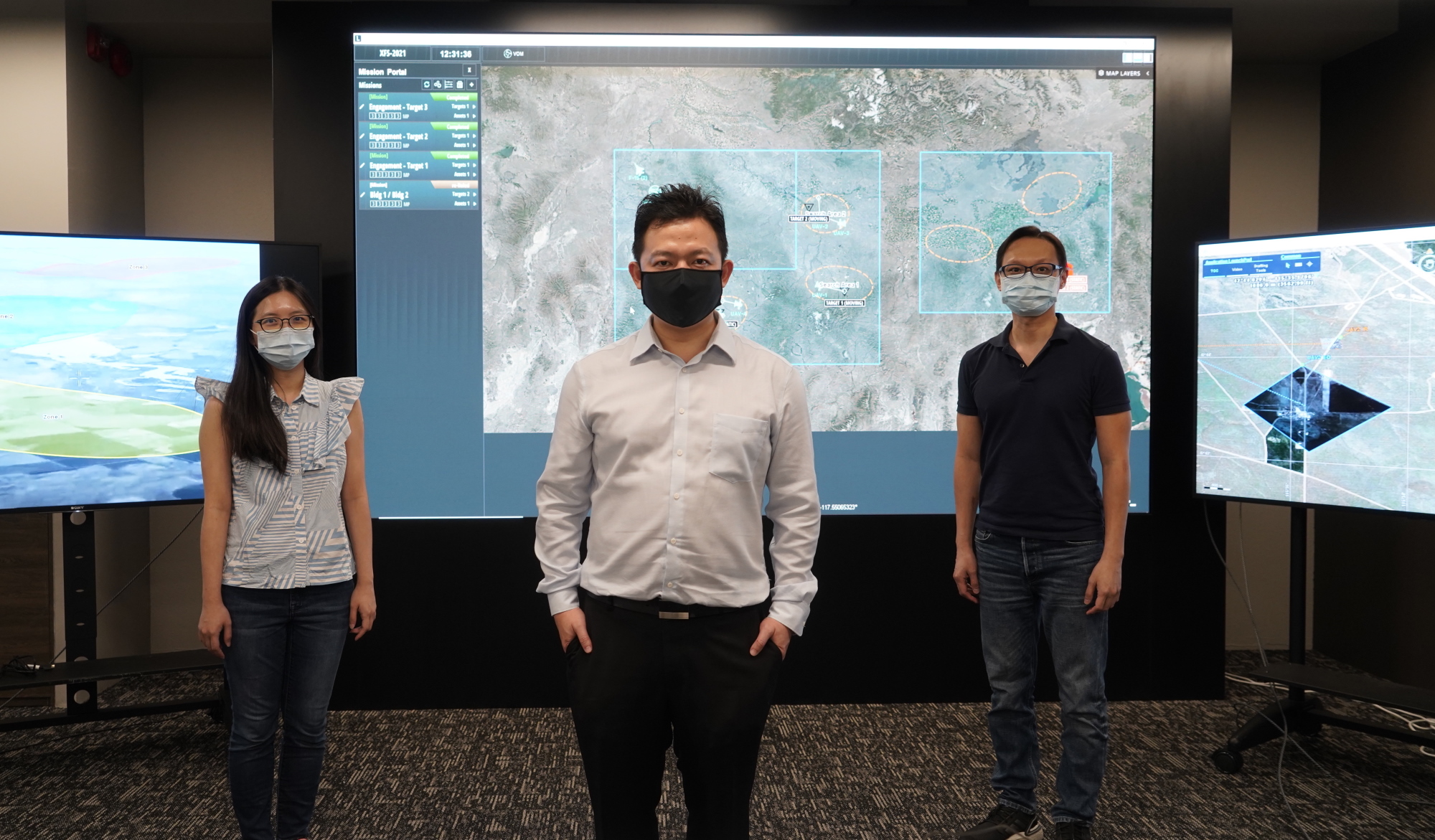
Head Capability Development (Military Information) Sim Jian Ping (centre), together with his team behind the CCIS.
Another team led by Project Manager (Land Systems) Astrid Lew was in charge of trialling a new sense and strike application that streamlines the last-mile engagement process for execution teams. Astrid said that the application’s features improve the collaboration between sense and strike personnel, while its decision support tools automate the tedious processes involved in conducting last mile engagements.
“Previously, execution teams had to input and tabulate mission data, check for potential collateral damage, and compile mission details manually during the last mile engagement process. The application is estimated to reduce the amount of time needed to conduct the relevant processes significantly,” she explained.
Similar to the CCIS, the application’s video feeds of unmanned aerial vehicles will also provide execution teams with better situational awareness, and help them seek out targets more effectively.
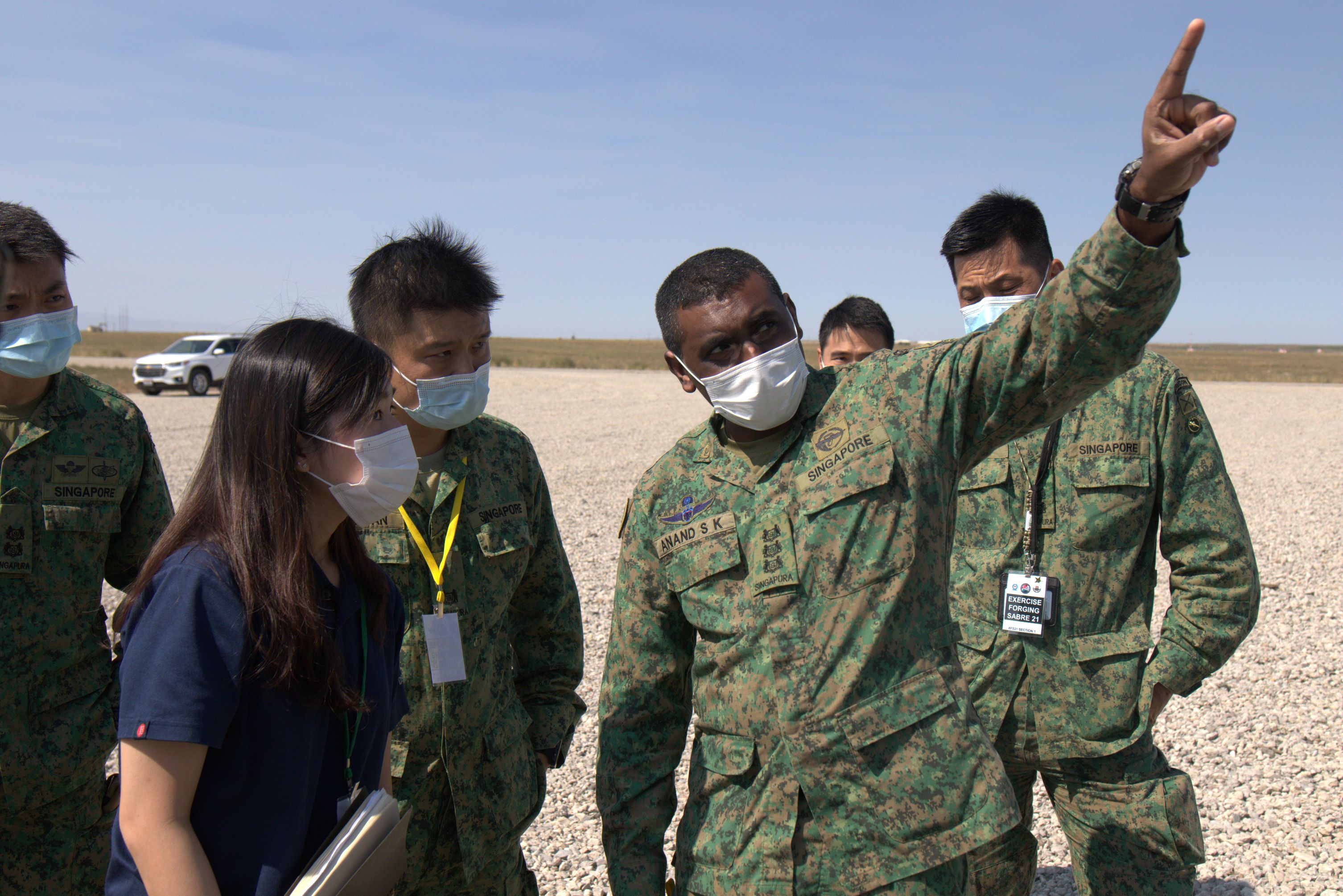
Astrid in the field with her SAF counterparts, including Chief Army Intelligence Officer COL Anand S/O Sathi Kumar, at XFS21.
We caught up with Jian Ping, Kevin, and Astrid to find out more about their experiences in the field.
What was your role at the exercise?
Jian Ping: I headed the team to develop the CCIS. To do so, I collaborated closely with the SAF to understand their unique mission requirements before proposing the technologies to be incorporated into the enhanced CCIS.
Kevin: I worked closely with SAF commanders to determine the best way to deploy the CCIS so that we could measure the efficiency and effectiveness of the various Command and Control models. The findings from the deployment allowed our team to further enhance and fine-tune the engine later on.
Astrid: I led a team to trial the sense and strike application for the execution teams in the command post.
What challenges did you face?
Jian Ping: Developing the CCIS’s Recommendation Engine required us to understand complex ops procedures and mission requirements. With our strong ops-tech partnership with the SAF, our SAF counterparts helped us understand better and responded to our queries as quickly as they could. That enabled us to codify and build a Recommendation Engine that met the SAF’s needs.
Kevin: We faced many unforeseen circumstances. For example, there was one operation where we were required to install the CCIS on multiple laptops, even though the laptops’ hardware specifications were not catered to operate multiple systems simultaneously. We had to be creative as any delays could impact the operation. We identified customisable commercial products capable of performing desktop screen recordings, and used multicasting to stream the videos to the intended laptops. This allowed our SAF partners to watch the stream over the local network, and provided commanders with an overall situational awareness of the operation without compromising hardware performance.
Astrid: As the sense and strike application had yet to be trialled in a high-pressure wartime scenario prior to XFS21, we were unsure of how it would perform during the exercise. Inevitably, there were time-critical issues that we had to resolve there and then. For example, as the application was a prototype, we encountered unexpected responses from the software, and we had to troubleshoot these immediately to ensure that the live missions could be completed successfully.
How does it feel to see your efforts come to fruition at XFS21?
Kevin: It was surreal to witness how the software our team developed contributed to the strengthened coordination between the SAF commanders and the various sense and strike assets to neutralise targets. I also felt an immense sense of pride and satisfaction when I saw how the Recommendation Engine facilitated and streamlined the commander's decision-making process. At the end of the exercise, the commanders came up to us to share their confidence in the CCIS. I could tell that all of us were smiling from ear to ear even behind our face masks!
Astrid: I am proud of what the team achieved with just eight months of development work. We managed to get a lot of valuable feedback, and will definitely work on enhancing the system. I already look forward to the next iteration of the software! In addition, witnessing the successful deployment of the system further reinforced the importance of leveraging technology and emphasised DSTA’s role in Singapore’s defence.
